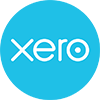Employee onboarding is a pivotal process in any organisation, laying the foundation for a productive and engaged workforce. This article explores the significance of seamless data integration between employee onboarding and payroll, highlighting key details, recent changes and expert advice to ensure a frictionless transition. Read on to learn how you can improve your employee onboarding process by integrating data seamlessly with payroll services in Melbourne.
Key Details of Data Integration for Employee Onboarding & Payroll
- Centralised Information – Integrating employee onboarding with payroll begins with centralised Streamline the process by maintaining a single database for employee details, ensuring accuracy and consistency.
- Automated Data Flow – Automation is key to reducing manual data entry and the risk of errors. Establish automated workflows that transfer employee information seamlessly from the onboarding process to the payroll system.
- Real-Time Updates – Employee details often change post-onboarding. Ensure that any updates to personal information, tax details or banking information are promptly updated in both the onboarding and payroll systems.
- Compliance Alignment – Align your onboarding process with payroll compliance requirements. Collect essential tax forms, superannuation information and other necessary documentation during onboarding to ensure accurate payroll calculations.
Recent Changes & Enhancements in Integration
Recent developments underscore the increasing importance of data integration between onboarding and payroll:
- Single Touch Payroll (STP) – The STP system mandates real-time reporting of payroll information, emphasising the necessity of seamless data integration to ensure accurate and timely reporting.
- Automated Platforms – Leading onboarding and HR platforms are increasingly integrating with payroll software, simplifying the data transfer process and reducing the risk of discrepancies.
Expert Advice for Smooth Data Integration
- Standardised Processes – Standardise your employee onboarding processes to collect consistent and complete information for each new hire. This simplifies the data integration process and minimises the risk of errors.
- Collaborative Communication – Foster strong communication between HR, onboarding teams and payroll professionals. Regularly share updates about new hires, changes and terminations to ensure alignment.
- Data Validation Checks – Implement validation checks at various stages to ensure accuracy. This includes cross-referencing employee data in both systems and verifying against official documentation.
- Employee Self-Service Portals – Choose self-service payroll services that allow employees to update their personal information directly. This reduces the burden of manual updates and ensures real-time accuracy.
- Regular Audits – Conduct periodic audits to ensure that data integration processes are functioning as intended. Identify any discrepancies and address them promptly.
- Training & Documentation – Train your teams on the importance of accurate data integration and provide clear documentation outlining the steps to follow for seamless onboarding-to-payroll data transfer.
Conclusion
Seamless data integration between employee onboarding and payroll is a cornerstone of efficient HR and financial operations. By centralising information, leveraging automation and staying informed about recent changes, you can ensure a smooth transition from onboarding to payroll. Expert advice emphasises standardised processes, collaborative communication and validation checks to maintain accuracy and compliance. Ultimately, prioritising data integration enhances operational efficiency, reduces errors and fosters a positive employee experience, reinforcing the vital role of accounting and bookkeeping professionals in business success.
If you’re interested in improving your onboarding process with QuickBooks or Xero bookkeeping services, get in touch with Alexander Bright – one of the leading Xero and QuickBooks bookkeepers in Melbourne.
Disclaimer: The accounting advice provided in this article is for informational purposes only and should be self-verified or consulted with a qualified accountant before making any financial decisions.
Managed Accounting Services
Our Newsletter
Article Categories
Select Month
 +61 3 8658 5821
+61 3 8658 5821




